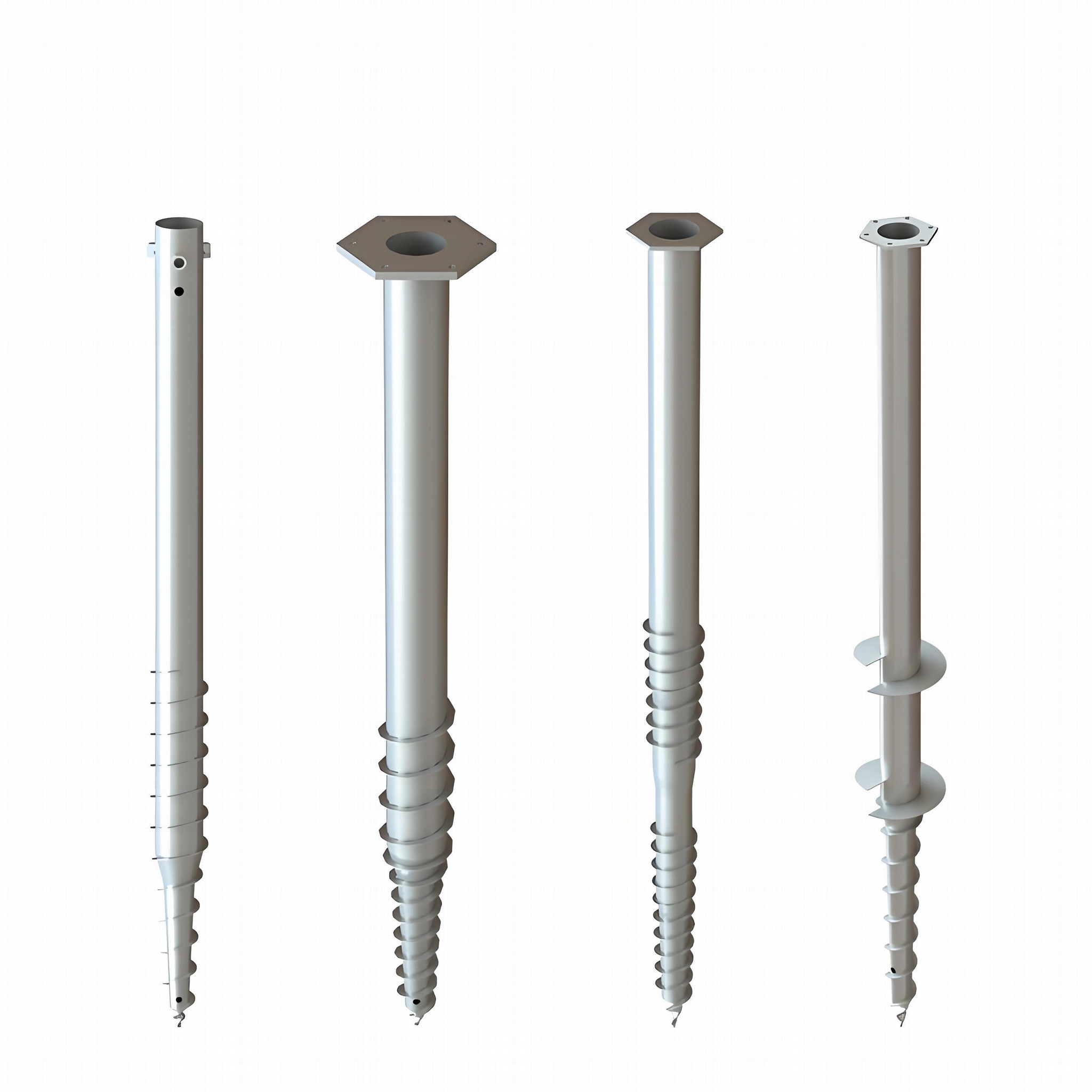I. Origins: 200 Years of "Screw Evolution" from Lighthouses to Solar Farms
Two centuries ago along England’s Thames River, engineers struggled with lighthouses sinking into squishy . Then someone had a bright idea: flip a ship’s propeller upside down! In 1836, the first screw pile was born—like a giant steel screw twisting into the ground, using its threads to grip soil and stand firm. This solved the sinking problem in soft mud, kicking off the era of "mechanical foundations."
Today, this "steel screw" has gotten smarter:
Soil-Smart Threads: Different "thread spacing" for different soils—wide threads for quick drilling in clay, tight threads for extra grip in sand;
Long-Life Armor: An 85-micron galvanized coating (5x more corrosion-resistant than regular steel) keeps it going for 50+ years;
Mechanical Muscle: Hydraulic drivers now install one in under 10 minutes—10x faster than old-school foundation methods.
II. The Three "Body Parts" of a Ground Screw
Don’t let its giant screw look fool you—every part is designed for genius:
.Spiral Blades: The "Soil-Gripping Expert"
Work like a screw’s threads, twisting into the ground to lock soil tightly, transferring weight to firm layers below.
Dutch engineers created "gradient threads": for fast drilling, for super grip, boosting pullout strength by 30%—like a skinny guy lifting heavy weights.
.Shaft Body: Tough Steel with Hidden Tricks
Made of high-strength steel, coated with a zinc layer thinner than a human hair but ultra-resistant to sea salt, acid soil, and rust.
Hollow versions can hide cables or sensors—perfect for solar panels, where wires run safely through the screw itself.
.Top Flange: The "Universal Adapter"
Standardized bolt holes fit solar mounts, gazebos, railings—any "partner" structure. Installation error? Less than 2mm—preciser than building blocks.
III. Smarter Than Concrete: How It Stays Standing
While concrete relies on "dig a hole, pour cement," ground screws "make friends with soil":
Up & Down Strength:
Pulling up? Threads create a "resistance shield" in the soil—bigger/deeper threads mean stronger grip (a 20cm-diameter, 1.5m-deep screw holds 50 tons, equal to 10 elephants!);
Pushing down? Threads transfer weight to lower soil layers like a relay race.
Wind & Quake Resilience: Soil around the screw acts like a "shock absorber," deforming half as much as concrete foundations—ideal for typhoon and earthquake zones.

